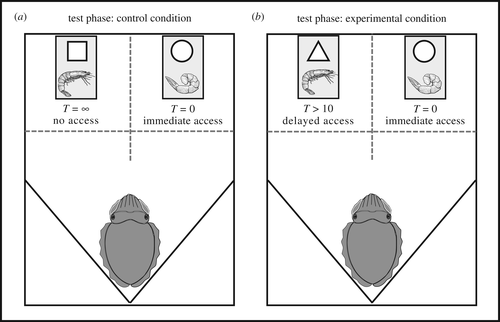A study published in Proceedings of the Royal Society B has revealed that common cuttlefish can pass a test of delayed gratification—a benchmark of cognitive ability typically applied to children, primates, and birds. This research, led by behavioral ecologist Alexandra K. Schnell of the University of Cambridge, adds another layer to our understanding of cephalopod intelligence, and it’s forcing scientists to rethink how cognitive skills evolve in non-human species.
Delayed Gratification in a Creature Without a Backbone
The experiment was modeled on the classic Stanford marshmallow test, originally used to study self-control in children. In the child version, a subject is offered a marshmallow with the option: eat one now, or wait 15 minutes and get two. It’s a simple but effective way to measure the ability to plan for the future.
Schnell and her team adapted this test for Sepia officinalis, the common cuttlefish. The test setup involved two transparent doors: one that opened immediately to reveal a less-preferred snack—raw king prawn—and another that would open after a short delay to reveal a more desirable food—live shrimp. The doors were marked with symbols: a circle for “immediate,” a triangle for “delayed,” and a square for “never.”


The cuttlefish were trained to recognize these symbols and associate them with different waiting times. The results were clear. All six cuttlefish tested opted to wait up to 130 seconds to get the better food—behavior that directly mirrors that of animals with much larger, more complex brains.
Why Would a Solitary Predator Need Self-Control?
What makes this finding more compelling is that cuttlefish are not social animals. Unlike chimpanzees, crows, or parrots, they don’t live in groups or share food. In social species, self-control is often linked to cooperation or hierarchy—traits not present in cuttlefish behavior. So why do cuttlefish have this ability at all?
Schnell suggests it could be linked to their ambush hunting strategy. These animals spend much of their time camouflaged against the ocean floor, waiting for the perfect moment to strike at prey. Acting too quickly could expose them to predators or result in a failed hunt. The need to delay action until conditions are optimal might have naturally selected for this kind of impulse control.
As Schnell put it: “Cuttlefish spend most of their time camouflaging, sitting and waiting… We speculate that delayed gratification may have evolved as a byproduct of this, so the cuttlefish can optimize foraging by waiting to choose better quality food.”
Smarter Than We Thought
The team also tested the cuttlefish’s learning flexibility. After teaching the animals to associate a particular shape with a reward, they switched the shapes to see if the cuttlefish could adapt. The ones that adjusted fastest were also the ones who waited longest in the delayed gratification test. This correlation suggests a broader cognitive ability: behavioral flexibility—a key indicator of intelligence.
These findings match what’s been observed in other cephalopods. Previous research has shown that cuttlefish are capable of episodic-like memory, and a 2024 study even hinted they may form false memories—a trait once thought limited to humans and a few mammals.


The study clearly demonstrates that intelligence doesn’t need to follow a single evolutionary path. In this case, a brain structured entirely differently from our own—or a bird’s—is producing similar behaviors.
Why This Matters for Conservation and How We Understand Minds
This discovery goes beyond curiosity. Cuttlefish populations are under increasing pressure from rising ocean temperatures, acidification, and overfishing. For example, the giant Australian cuttlefish (Sepia apama) is already experiencing significant population stress.
Understanding how complex and adaptable these animals are could help reframe how we prioritize their protection. It’s no longer just about biodiversity—it’s also about preserving forms of intelligence we’re only beginning to recognize.
Source link
